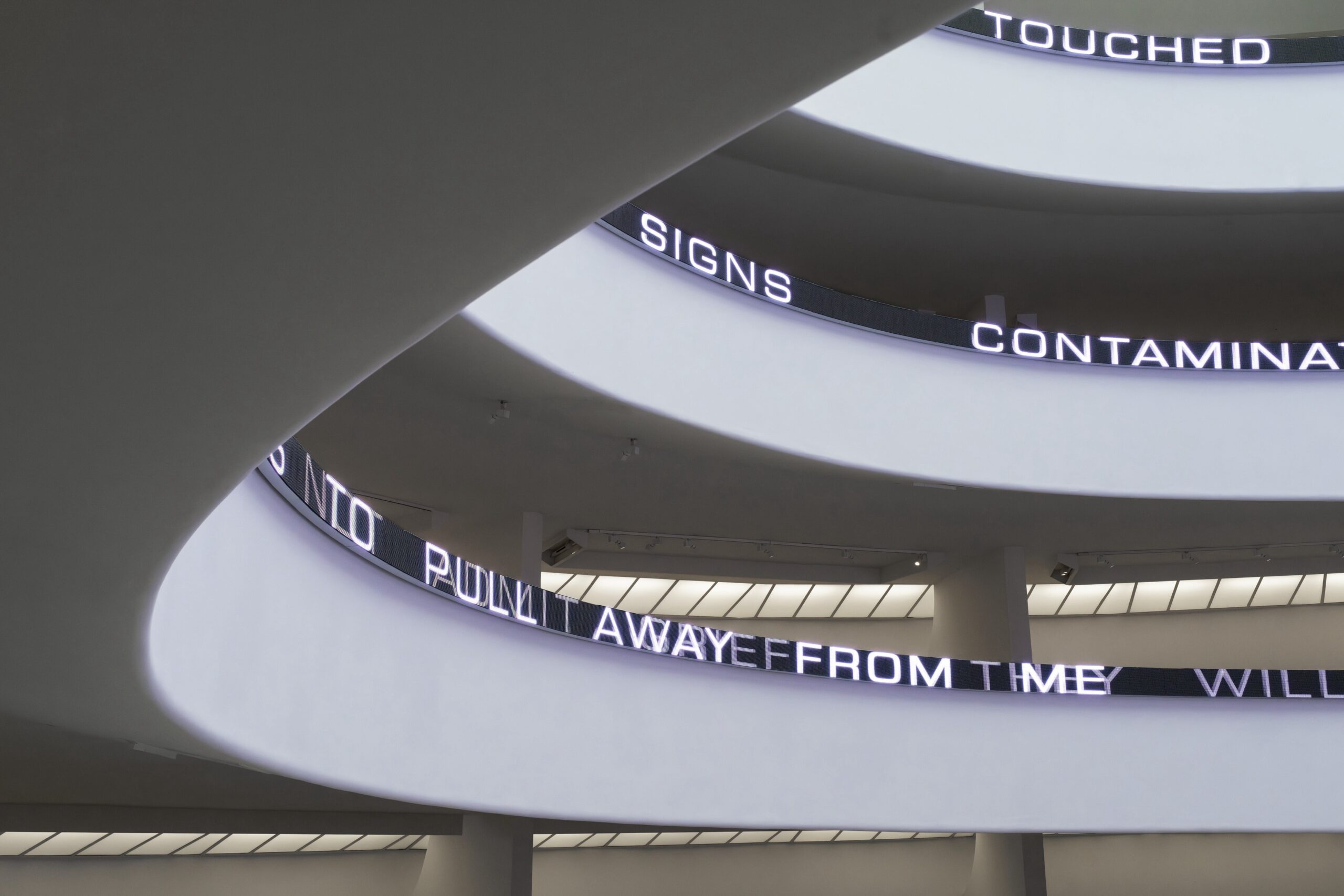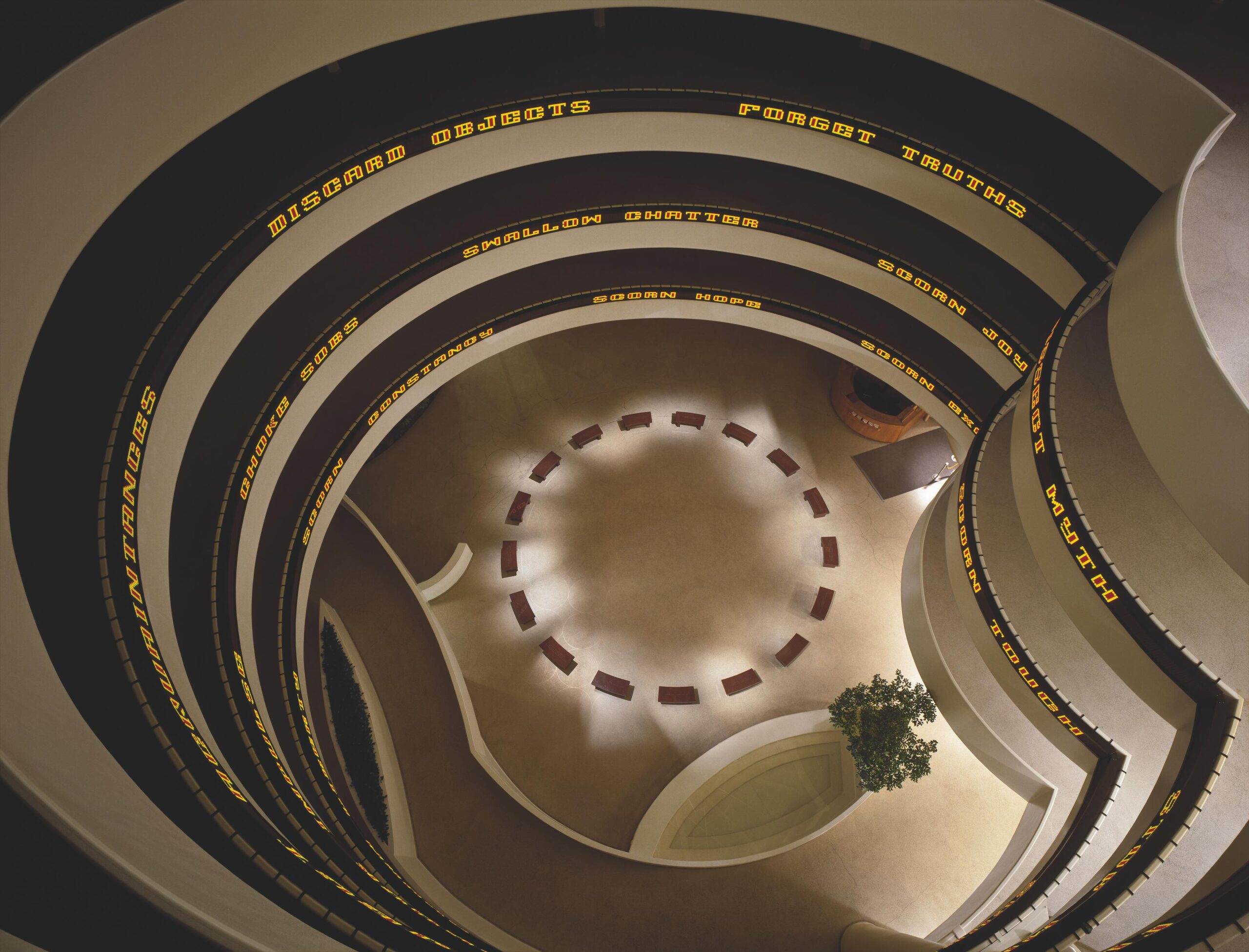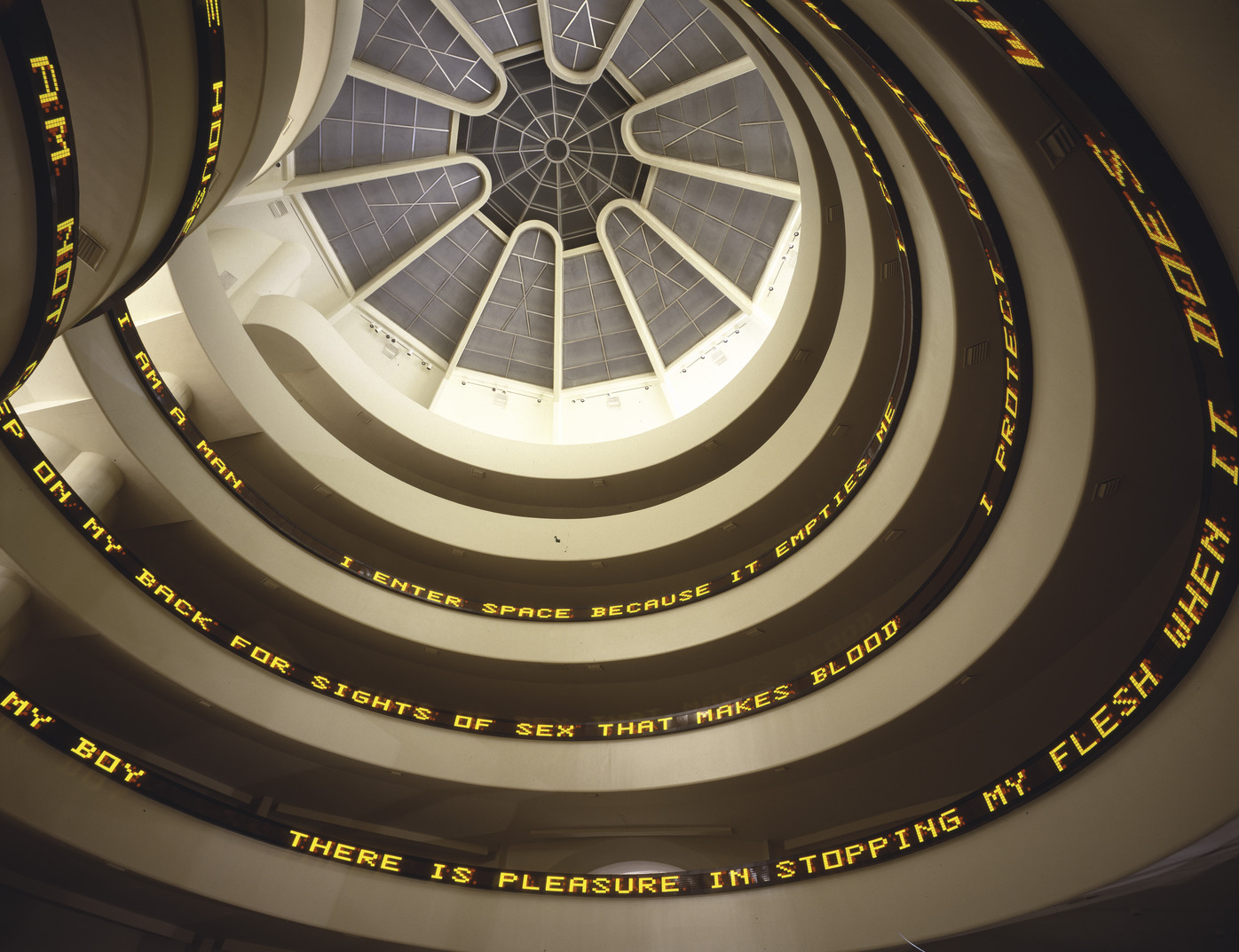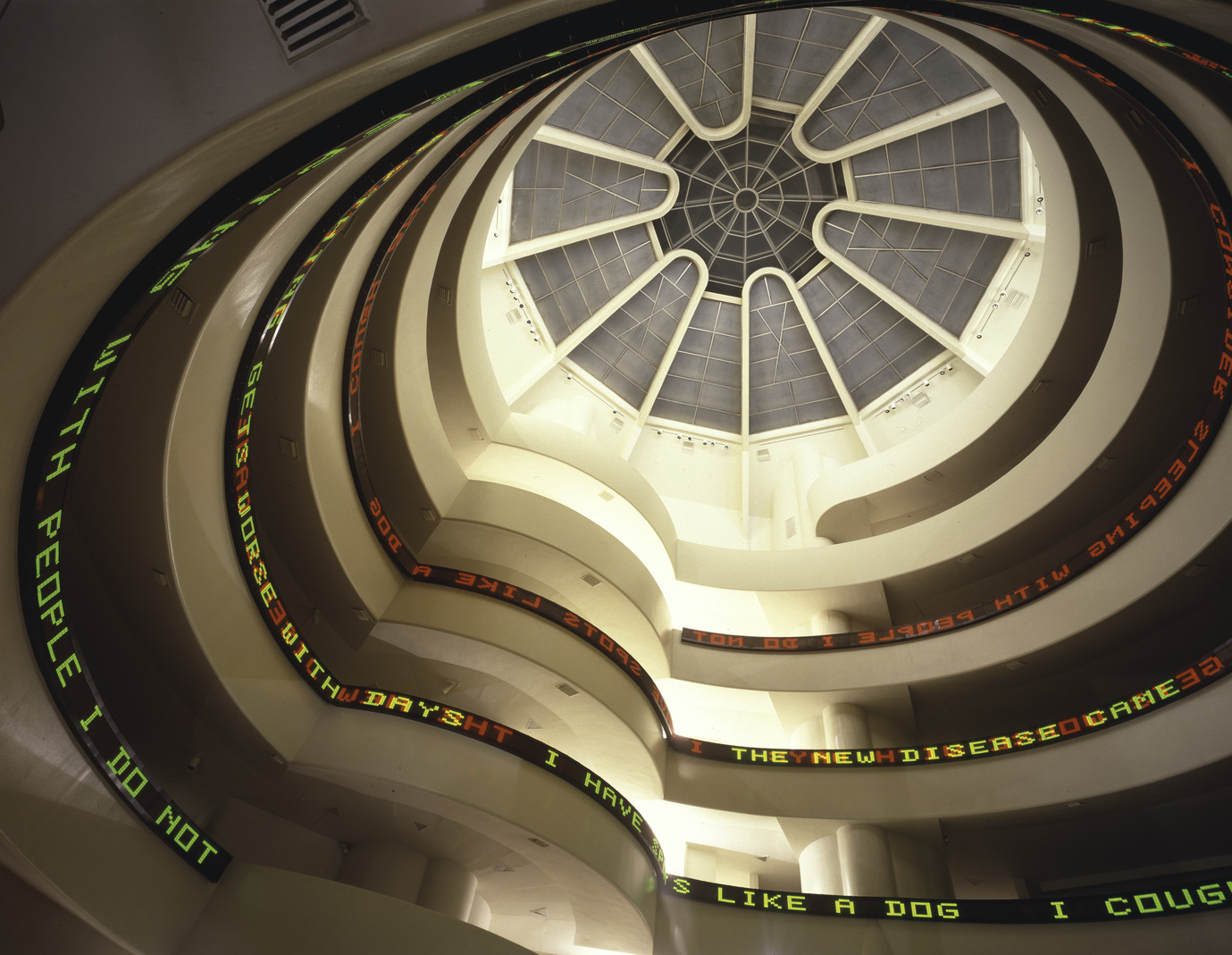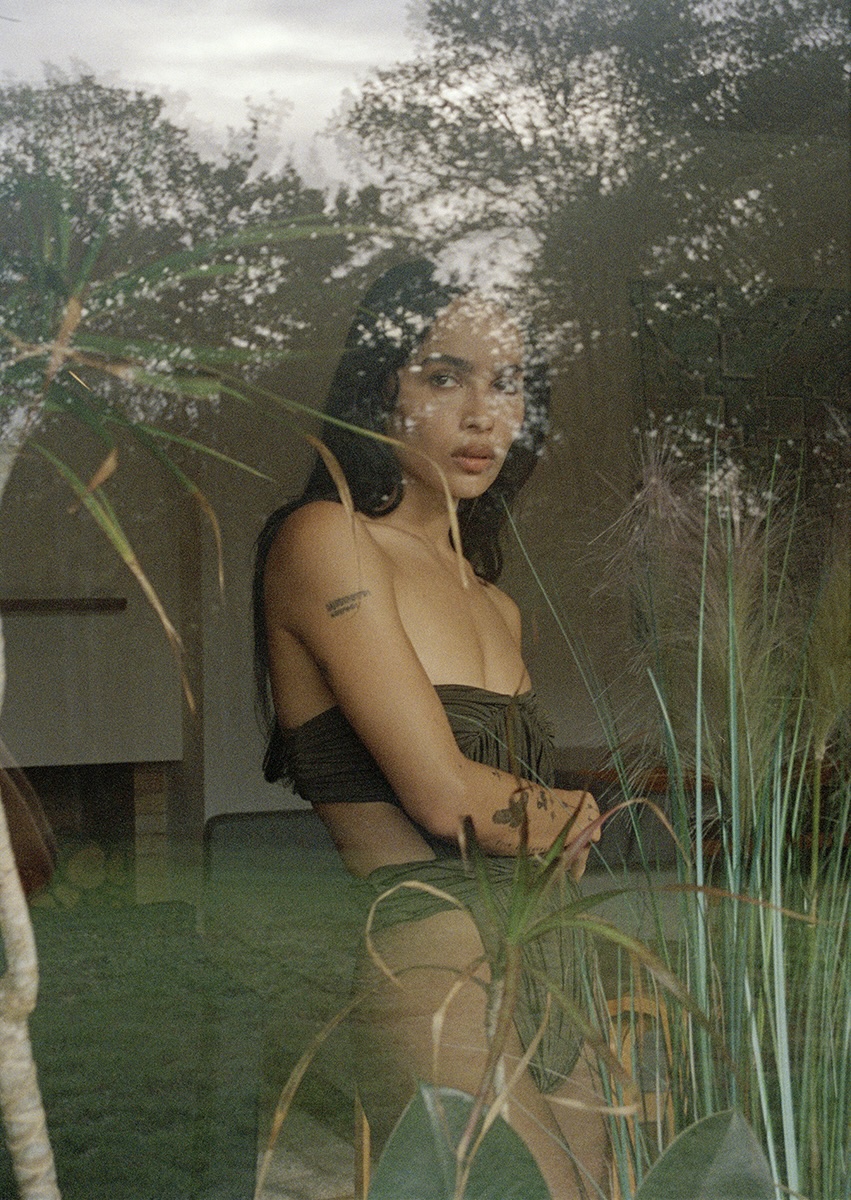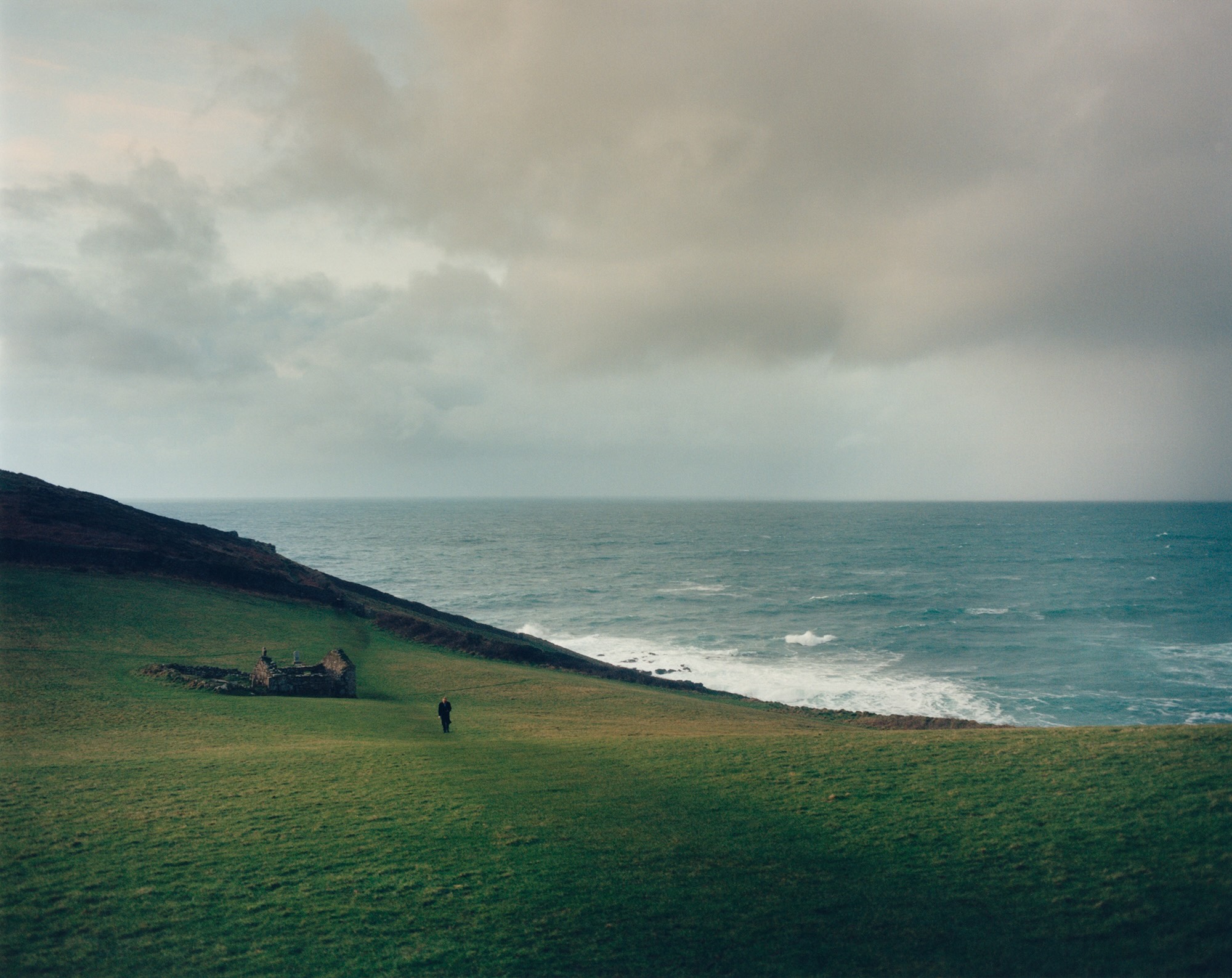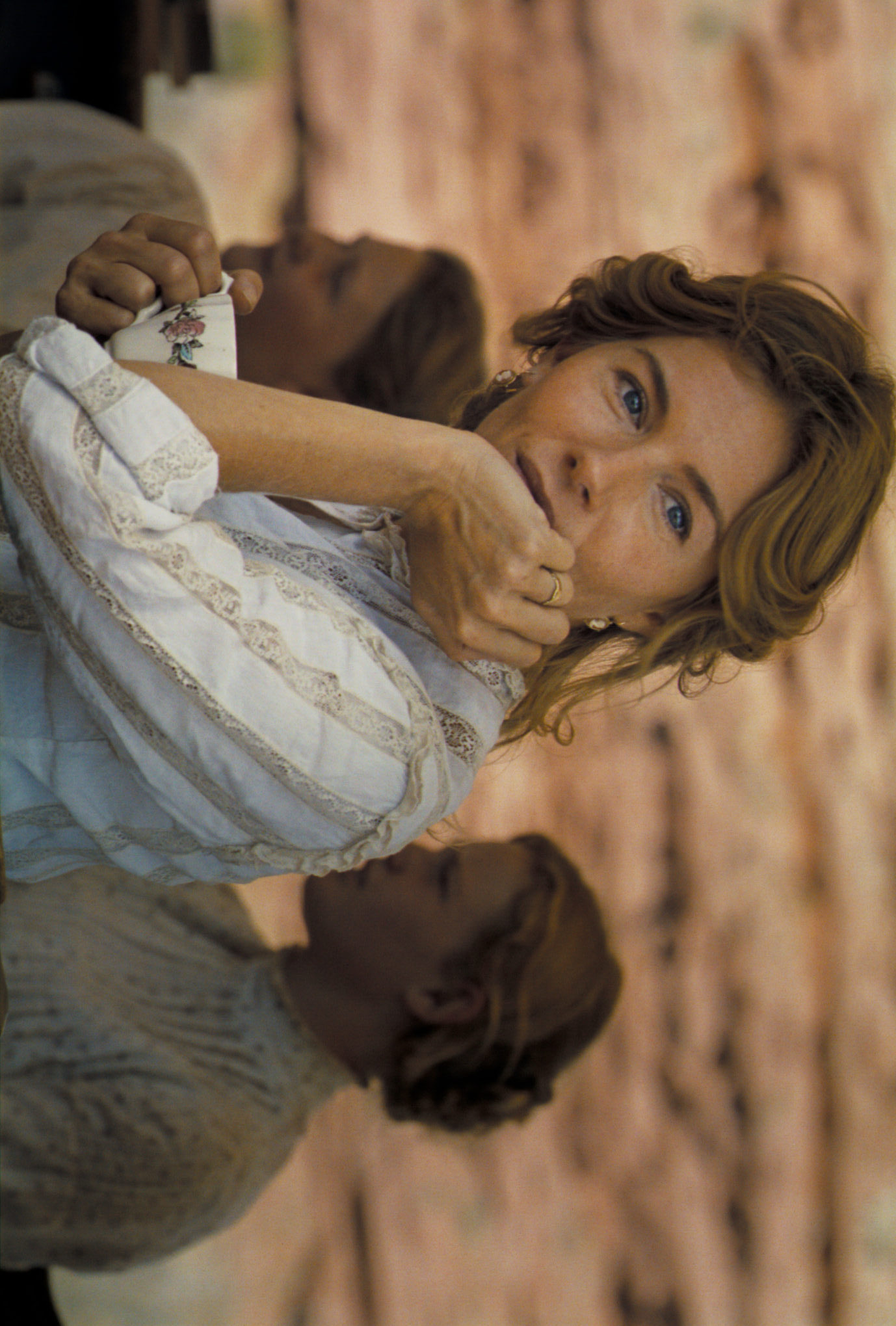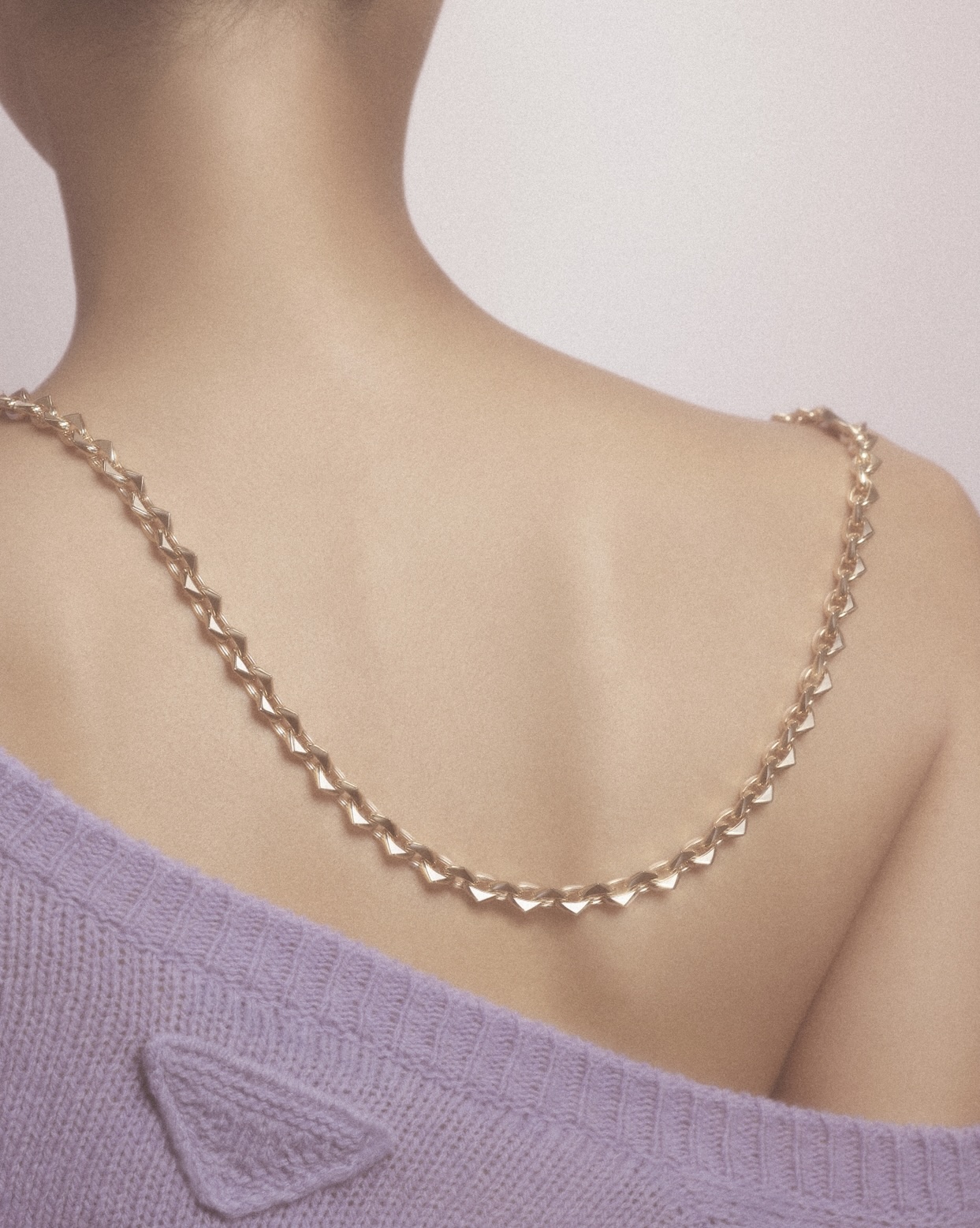Jenny Holzer: Light Line
Guggenheim Museum, New York
From May 17th until September 29th, 2024
The Guggenheim Museum in New York will present Jenny Holzer: Light Line, a reimagining of the American artist’s historic installation created in 1989, considered a masterpiece of textual art. Jenny Holzer is a neo-conceptual feminist artist whose work is known for the distinctive use of language, employed – since the 1970s, in New York billboards – as a means of expression to critically address social and political themes and to evoke emotional reflections through the use of short provocative and assertive statements. Her practice, known as word art or text art, became particularly famous when Holzer began to utilize LED displays, and her light projections became the most recognizable medium. These dynamic works play on the intersection of art and technology to create moving content.
“I used language because I wanted to offer content that people—not necessarily art people—could understand”.
Holzer emerged in the late 1970s and early 1980s with the intention of taking art out of the context of museums and galleries, making it more accessible to the general public. At the time, her strategy involved using texts printed on billboards, benches in parks (as in It takes a while before you, 1989), and printed objects like t-shirts and posters to spread her practice. Truisms, her most well-known works, first appeared in 1977 and were inspired by readings from the Whitney Independent Study Program, where she was a student, which focused on structuralist and post-structuralist theories of language. In a period when mass reproduction media, like television and photography, were challenging fundamental understandings of art, Jenny Holzer’s Truisms presented an art beyond representation and authorship: beginning with A little knowledge goes a long way and ending with Your oldest fears are the worst ones, the Truisms employ a variety of voices and express a wide range of beliefs and prejudices. In Holzer’s retrospective installation of 1989 at the Guggenheim Museum, flashing messages from her various series, programmed on a steady but silent pulse, ran along the length of an LED panel installed on the museum’s sweeping spiral ramp. Transporting her art from the street to the museum, Holzer focused on an audience vastly different from an unaware passerby: Guggenheim visitors under the rotating ribbons were already aware that this installation raised issues such as the vitality of public art, the commodification and consumption of art, and the confusion between the personal and the political – in short, some of the most pressing issues in American art in the 1980s.
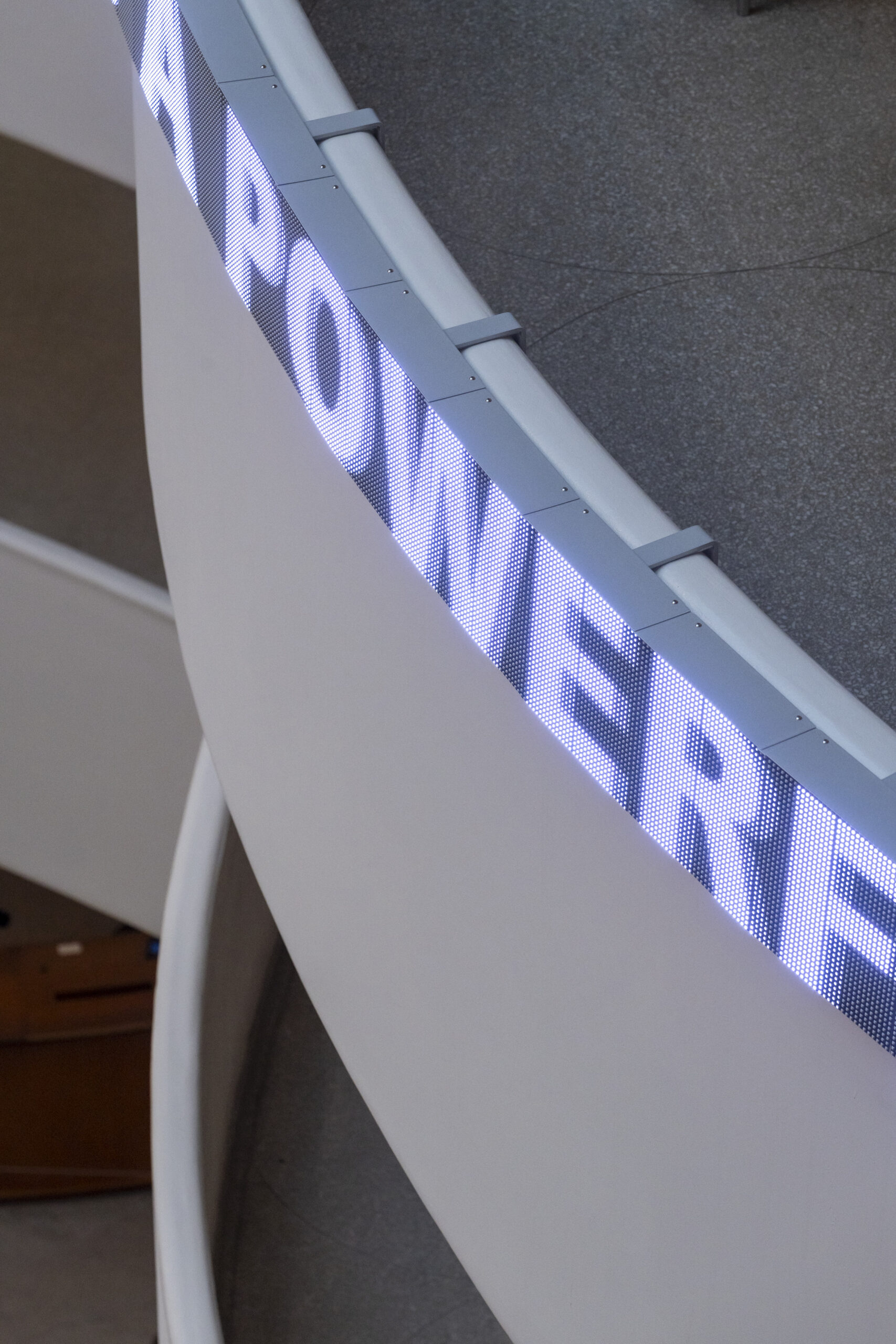
The messaging is timely and provides audiences with the chance to engage with the extraordinary, the political, the mundane, and the provocative through the artist’s innovative use of technology and language.
Holzer’s new work, Installation for the Solomon R. Guggenheim Museum (1989/2024), will once again transform the American Guggenheim building into a wide and updated display of scrolling texts, selected from her iconic series such as Truisms and Inflammatory Essays. Recalling the three turns of the rotunda designed by Frank Lloyd Wright in the 1989 exhibition, the new installation will climb all six ramps up to the building’s oculus, reminiscent of the artist’s original version. The work will highlight the incisive use of the written word, tracing Holzer’s entire practice. The new technological manifesto, developed in close collaboration between the artist and her studio, has also been the subject of an ambitious research project at the Guggenheim: restorers have reverse-engineered the 1989 LED hardware and software, providing valuable insights into documentation useful for future technological variations and updates; effectively contributing to studies on new methodologies for the dialogue between artworks and technology. In addition to the LED sign, the exhibition will feature a selection of Holzer’s works from the 1970s to the present day, including paintings, works on paper, and stone sculptures. During the exhibition’s opening week, Holzer’s For the Guggenheim, a light projection commissioned by the museum in 2008, will be displayed on the building’s façade. Jenny Holzer’s work continues to influence the landscape of contemporary art today, remaining at the center of discussions on the relationship between language, power, and perception.
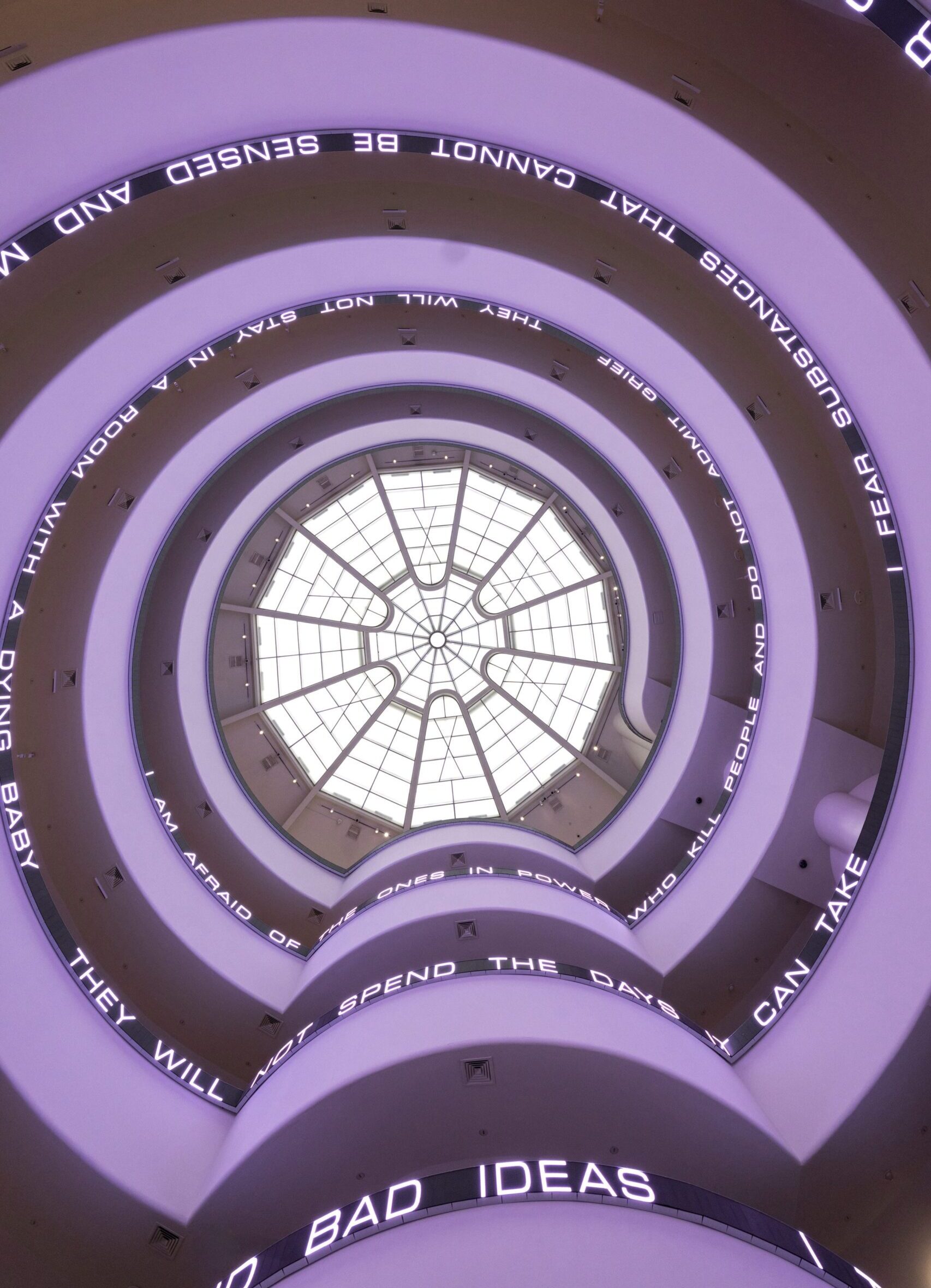
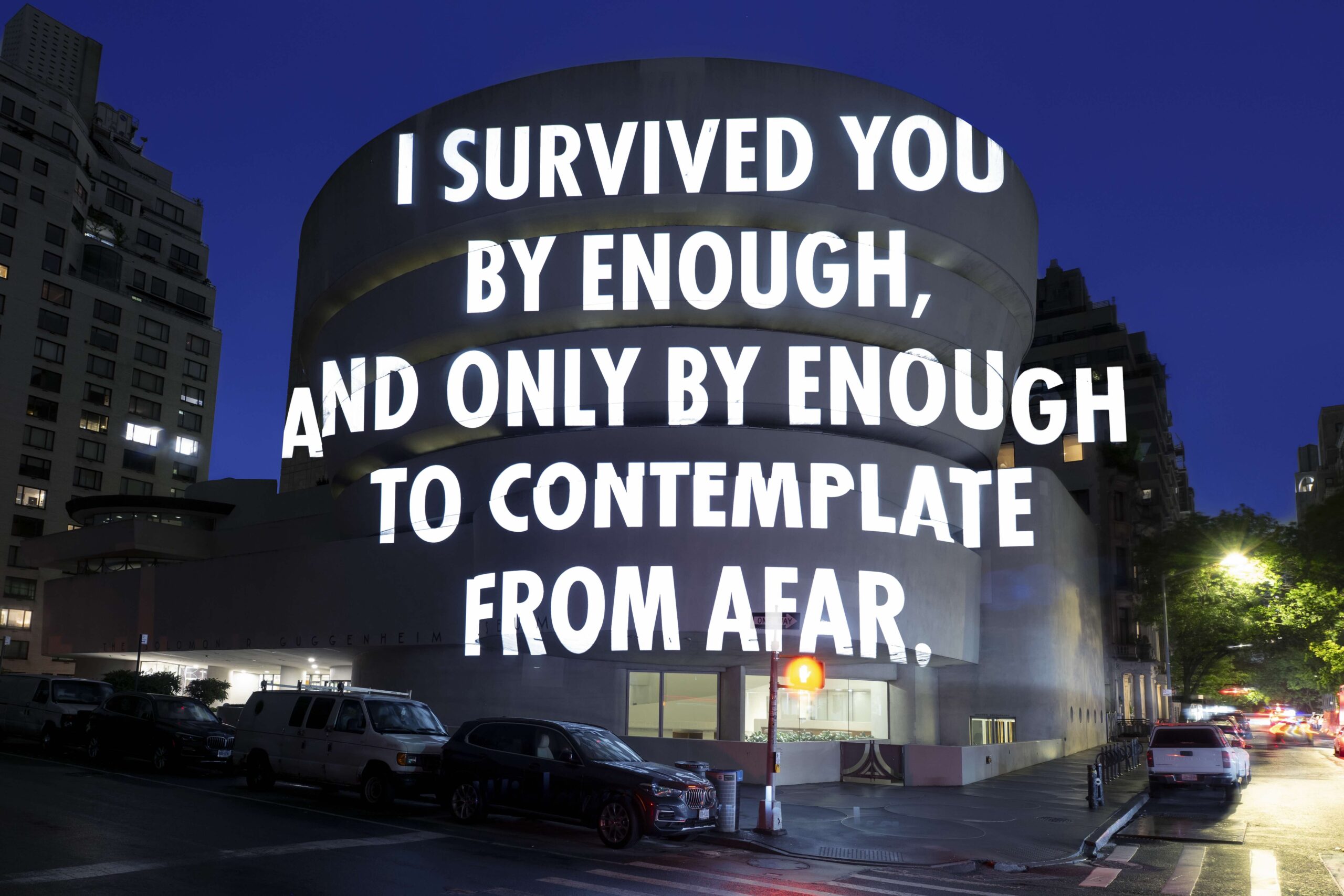
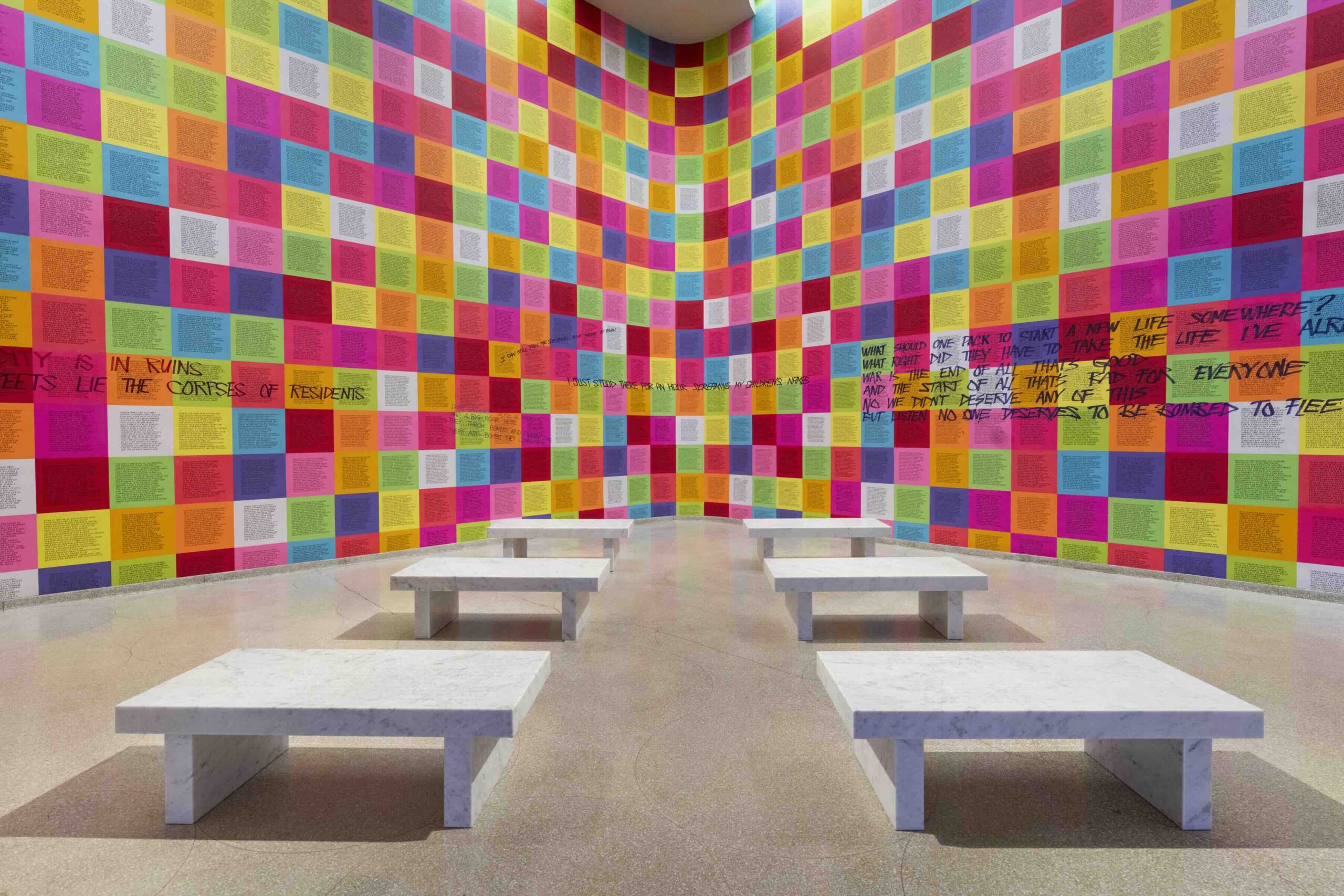
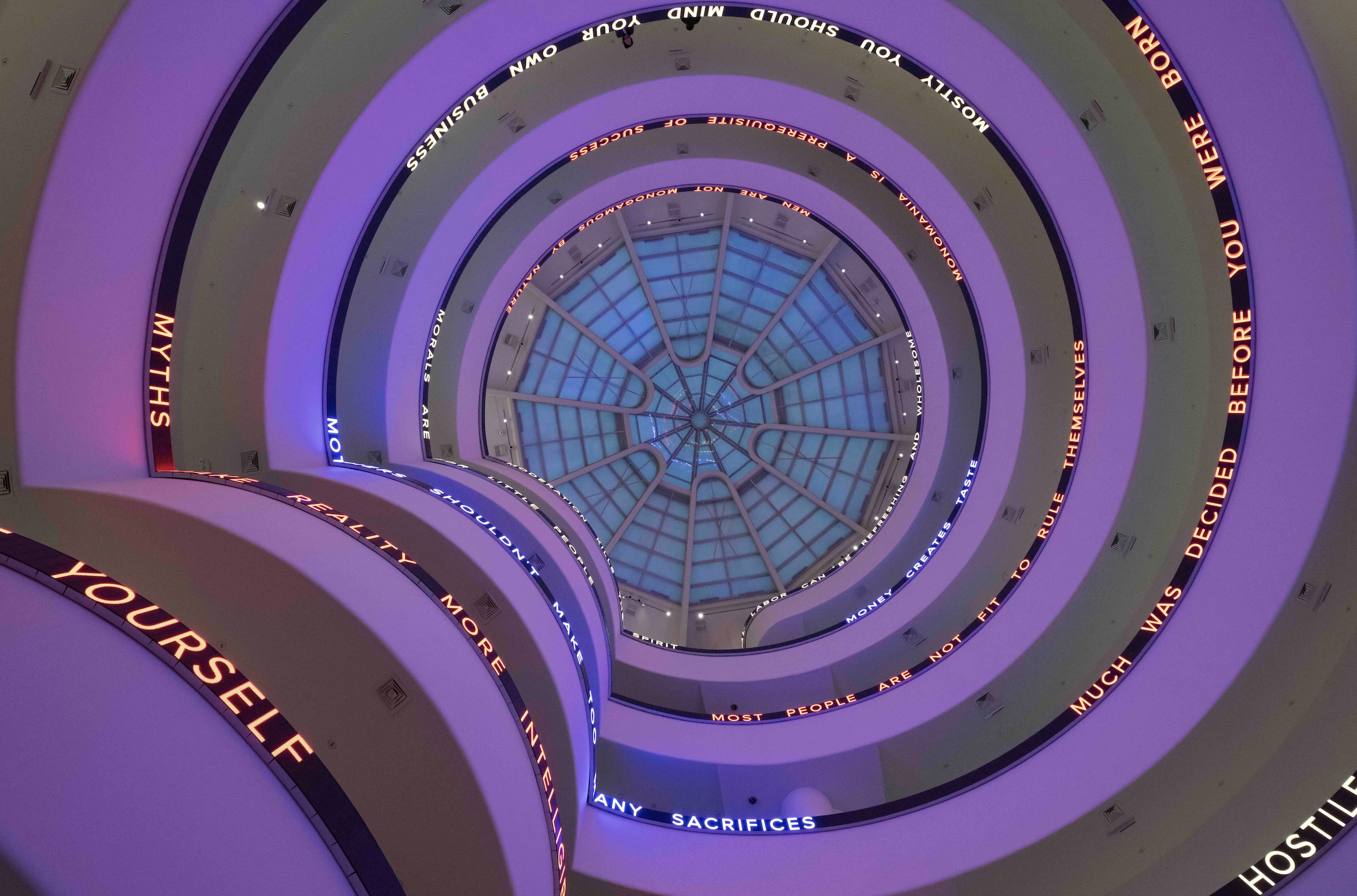
For further information guggenheim.org.
